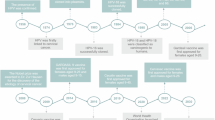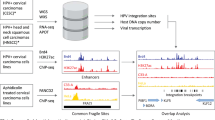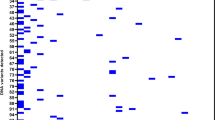Abstract
Specific DNA sequences from human papillomavirus have recently been detected in carcinomas from epidermodysplasia verruciformis patients1,2, and in vulvar3 and cervical4,5 carcinomas but the role of papilloma viruses in the aetiology of these tumours is unclear. Indeed, little is known about the mechanisms that convert benign papillomas into malignant tumours and it is not even possible to distinguish between inactive passengers and viruses involved in tumour induction. Here, we describe an animal system that permits an analysis of the interaction of papilloma virus genomes with carcinogenic agents at the molecular level. In our colony of Mastomys natalensis (a close relative of the rat family), we have found extrachromosomal papilloma virus genomes persisting in a variety of tissues such as skin, muscle, liver and colon. With the ageing of the animals, the average copy number of viral DNA in skin cells increases and virus-producing tumours begin to appear in Mastomys at about 1 year old. This process is drastically enhanced by chronic treatment with a tumour promoter and transcription of the viral genomes has been found to be correlated with tumour formation.
This is a preview of subscription content, access via your institution
Access options
Subscribe to this journal
Receive 51 print issues and online access
$199.00 per year
only $3.90 per issue
Buy this article
- Purchase on SpringerLink
- Instant access to full article PDF
Prices may be subject to local taxes which are calculated during checkout
Similar content being viewed by others
References
Ostrow, R. S. et al. Proc. natn. Acad. Sci. U.S.A. 79, 1634–1638 (1982).
Pfister, H., Gassenmeier, A., Nünberger, F. & Stuttgen, G. Cancer Res. 43, 1436–1441 (1983).
Zachow, K. R. et al. Nature 300, 771–773 (1982).
Gissmann, L. et al. Proc. natn. Acad. Sci. U.S.A. 80, 560–563 (1983).
Green, M. et al. Proc. natn. Acad. Sci. U.S.A. 79, 4437–4441 (1982).
Rudolf, R. & Thiel, W. Zentbl. VetMed. A23, 429–441 (1976).
Rudolf, R. and Müller, H. Zentbl. VetMed. B23, 143–150 (1976).
Müller, H. & Gissmann, L. J. gen. Virol. 41, 315–323 (1978).
Amtmann, E. & Sauer, G. Nature 296, 675–677 (1982).
Kreig, P., Amtmann, E. & Sauer, G. Analyt. Biochem. 134, 288–295 (1983).
Kreig, P. et al. Proc. natn. Acad. Sci. U.S.A. 78, 6446–6450 (1981).
Amtmann, E. & Sauer, G. J. Virol. 43, 59–66 (1982).
Author information
Authors and Affiliations
Rights and permissions
About this article
Cite this article
Amtmann, E., Volm, M. & Wayss, K. Tumour induction in the rodent Mastomys natalensis by activation of endogenous papilloma virus genomes. Nature 308, 291–292 (1984). https://doi.org/10.1038/308291a0
Received:
Accepted:
Issue date:
DOI: https://doi.org/10.1038/308291a0
This article is cited by
-
Care of Mastomys in the laboratory
Lab Animal (2016)
-
Polymorphism and signatures of selection in the multimammate rat DQB gene
Immunogenetics (2010)
-
A possible role for human papillomaviruses in head and neck cancer
Cancer and Metastasis Review (1996)
-
The soft-tissue tumours induced in Syrian hamsters by herpes simplex virus type 1 and a chemical promoter
Journal of Cancer Research and Clinical Oncology (1993)
-
Characterization of BPV-like DNA in equine sarcoids
Archives of Virology (1991)



